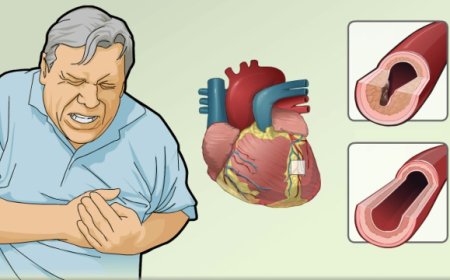Wrist pain

Introduction:
Wrist pain is a prevalent health issue that affects people of all ages across India. It can occur due to various reasons and can have a significant impact on a person's daily activities. In this article, we will explore the signs, symptoms, causes, types, diagnostic tests, treatments, and prevention techniques related to wrist pain, all explained in simple language for 10-year-old children to understand.
Signs and Symptoms:
When someone experiences wrist pain, they may feel discomfort, soreness, or aching in the wrist area. The pain can be mild or severe and may worsen with movement. Other symptoms include swelling, redness, and difficulty in using the hand to perform simple tasks like gripping objects, writing, or playing.
What Is Wrist Pain?
Wrist pain is a condition that arises when there is an injury or damage to the structures in and around the wrist joint. The wrist joint connects the hand to the forearm and consists of bones, ligaments, tendons, and nerves. When any of these components are affected, it can lead to wrist pain.
How Is Wrist Pain Classified?
Wrist pain can be classified into two main categories based on its duration:
- Acute Wrist Pain: This type of pain occurs suddenly and lasts for a short period. It is usually caused by injuries like sprains or fractures.
- Chronic Wrist Pain: Chronic pain persists for a more extended period, often several weeks or months, and can result from conditions such as carpal tunnel syndrome or arthritis.
Causes and Triggers:
Several factors can cause wrist pain in India, including:
- Injuries: Accidental falls, sports-related incidents, or sudden impacts can lead to fractures, sprains, or strains in the wrist.
- Repetitive Strain: Activities that involve repetitive wrist movements, like typing on a computer or playing musical instruments, can lead to overuse injuries and cause wrist pain.
- Arthritis: Inflammatory conditions like rheumatoid arthritis or osteoarthritis can affect the wrist joint and cause pain and swelling.
- Carpal Tunnel Syndrome: Compression of the median nerve in the wrist can result in tingling, numbness, and pain in the hand and wrist.
- Ganglion Cysts: Fluid-filled sacs that form around wrist tendons can lead to discomfort and pain.
- Infections or Inflammatory Conditions: Infections and inflammation in the wrist area can also cause pain and swelling.
Risk Factors with Examples:
Certain factors may increase the likelihood of developing wrist pain in India:
- Occupation: People who work on computers or perform repetitive tasks (like artisans or assembly line workers) are at higher risk of wrist pain due to repetitive strain.
- Sports: Athletes engaging in sports like cricket, badminton, or gymnastics may be prone to wrist injuries.
- Age: Older individuals may experience wrist pain due to degenerative conditions like arthritis.
- Lack of Exercise: Inactive lifestyle and weak wrist muscles can make the wrist more susceptible to injuries.
- Genetics: Some people may have a genetic predisposition to certain wrist conditions.
Types of Wrist Pain and Detailing for Each Type:
- Wrist Sprain: This occurs when the ligaments that connect the wrist bones are stretched or torn, commonly due to a fall or sudden twist of the wrist.
- Wrist Fracture: A fracture refers to a broken bone in the wrist, often resulting from a significant impact or fall.
- Carpal Tunnel Syndrome: This condition arises from the compression of the median nerve in the wrist, leading to pain and numbness in the hand and wrist.
- Tendinitis: Inflammation of the tendons, often caused by repetitive movements, can cause wrist pain.
- De Quervain's Tenosynovitis: A condition that affects the tendons on the thumb side of the wrist, leading to pain and swelling.
Diagnostic Tests and Their Uses for Treatments:
- X-ray: X-rays provide images of bones and are useful in diagnosing fractures and joint abnormalities.
- MRI (Magnetic Resonance Imaging): MRI can show detailed images of soft tissues like ligaments and tendons, helping identify injuries that may not be visible on X-rays.
- Nerve Conduction Studies: These tests evaluate nerve function and are used to diagnose conditions like carpal tunnel syndrome.
- Ultrasound: Ultrasound helps visualize soft tissues and can be used to assess inflammation and tendon injuries.
Treatments and Their Descriptions:
- Rest and Ice: For acute injuries, rest and applying ice can reduce swelling and promote healing.
- Medications: Pain-relieving medications and anti-inflammatory drugs may be prescribed to manage wrist pain.
- Physical Therapy: Therapeutic exercises can strengthen wrist muscles and improve mobility.
- Splints and Braces: Wearing splints or braces can provide support and alleviate pressure on the wrist.
- Injections: Corticosteroid injections may be used to reduce inflammation in the wrist joint.
- Surgery: In severe cases, surgery may be required to repair fractures, release compressed nerves, or address other structural issues.
Complications of Wrist Pain and Prevention Techniques:
If left untreated, wrist pain can lead to chronic discomfort, limited mobility, and difficulty performing daily activities. To prevent wrist pain, children can follow these simple techniques:
- Take Breaks: When engaging in activities that strain the wrist, take regular breaks to rest and stretch the hands.
- Warm-up: Before participating in sports or activities involving repetitive wrist movements, warm-up exercises can help prevent injuries.
- Maintain Proper Ergonomics: When using a computer or doing schoolwork, ensure a comfortable wrist position and use wrist pads if needed.
- Stay Active: Regular exercise and strengthening of wrist muscles can improve wrist stability and reduce the risk of injury.
- Use Protective Gear: When playing sports or engaging in physical activities, wearing wrist guards or pads can offer protection.
Wrist pain is a common concern in India that can arise due to various factors such as injuries, overuse, or underlying medical conditions. It is essential to recognize the signs and symptoms of wrist pain and seek appropriate medical attention for diagnosis and treatment. By following preventive measures and taking care of their wrists, children can reduce the risk of experiencing wrist pain and maintain healthy and active lives.
What's Your Reaction?
 Like
0
Like
0
 Dislike
0
Dislike
0
 Love
0
Love
0
 Funny
0
Funny
0
 Angry
0
Angry
0
 Sad
0
Sad
0
 Wow
0
Wow
0








































































